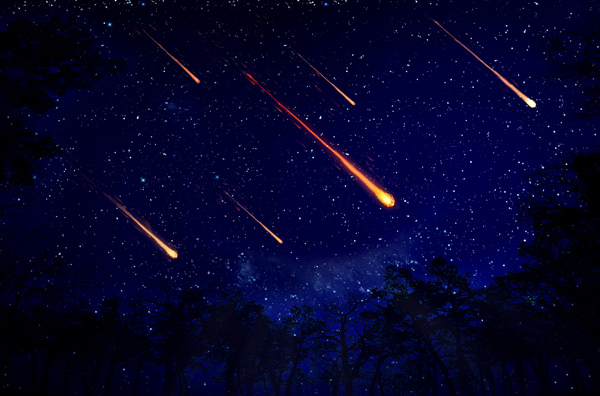
“Did you see that?”
As Bryon and I headed out to meet some friends, a brilliant burst of light streaked across the dark sky. In the blink of an eye, it was gone. But seeing it reminded me of the vastness of the universe and how glorious our night skies can be.
Growing up in the suburbs of a large midwestern city, I don’t remember ever seeing meteors or “shooting stars” as we called them as kids. Now I know that is probably because the amount of light pollution greatly lessened the chances of seeing them, or stars in general.
But once I moved to the mountains, I seemed to see shooting stars frequently. When I lived in the Sierra in California, I had a particularly amazing experience while spending a summer weekend in Yosemite National Park.
I visited a friend during the second weekend in August. He lived along the Glacier Point Road along with two other rangers. We climbed Sentinel Dome on a clear and balmy night. The Perseids Meteor Showers were peaking and so we brought a blanket and some snacks and waited for the show to begin. The meteors were whizzing across the sky so fast and furious, it was impossible to keep track of them.
“There goes one! And there’s another!”
We stayed up on that rock until 3 a.m. in the morning watching astronomy’s greatest show on earth. To this day, it is the greatest display of meteors I’ve ever seen. Something about sitting on top of a mountain peak or dome in the silence of wilderness watching the shooting stars whiz across the sky defines the essence of a national park experience.
But you don’t have to wait until August to catch these light displays. Meteor showers occur on a regular basis throughout the year including winter. Tonight the Quadrantid Meteor showers are peaking, which we caught a preview of the other night.
What exactly is a meteor shower?
According to stardate.org, a meteor is defined as:
Most meteor showers are spawned by comets. As a comet orbits the Sun it sheds an icy, dusty debris stream along its orbit. If Earth travels through this stream, we will see a meteor shower. Although the meteors can appear anywhere in the sky, if you trace their paths, the meteors in each shower appear to “rain” into the sky from the same region.
Meteor showers get their names from the region of the sky where they coincide with. The Leonids showers in November derive from the constellation Leo.
Your next big chance to see meteor showers won’t be until the Lyrids showers in April. Find yourself a nice dark dome or peak and get comfortable as you witness the glory of our night skies.


Lucky! We figured the Quadrantids would be washed out by that big bright full moon.
so we didn’t even bother to look. We’ve been unsuccessful viewing any meteor showers recently.
We’ll have to tell you about the Leonid meteor storm we saw back in 2003. It was incredible!